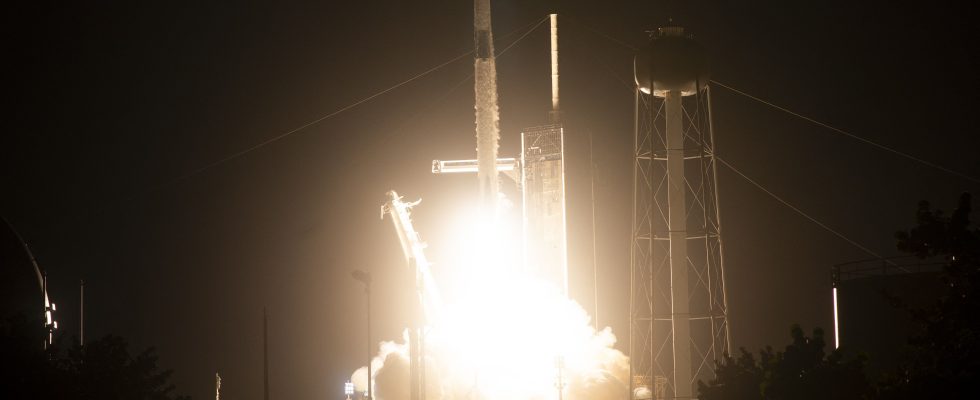The global race to explore the moon is heating up. A Japanese rocket is due to take off on Monday, August 28, carrying a small module to land on the Moon within four to six months. This new attempt comes after unsuccessful Japanese tests while India has just succeeded in its first moon landing. Before the latter, only the United States, the Soviet Union and China had already succeeded in landing on the moon. Proof of the technical complexity of this trip: a new Russian attempt has just failed, its Luna-25 probe having crashed on August 19 on the lunar soil.
For the Japanese mission, the pressure is strong, especially since the project seemed to be on the wrong track. The take-off of the rocket, initially scheduled for Saturday, was postponed to Sunday and then to Monday due to bad weather conditions expected this weekend at the launch site of the Japanese space agency (Jaxa), in Tanegashima, in the southwest of the country. The event will be streamed live on Jaxa’s YouTube channel, offering English and Japanese streaming.
The project consists in particular in testing a high-precision moon landing technology, at a maximum of 100 meters from its target – against several kilometers usually – with a small and light probe (700-730 kg). Hence the name of this module, SLIM (Smart Lander for Investigating the Moon), and his nickname “Moon Sniper”. For mobile exploration robots, “navigating steep slopes and uneven terrain still represents a high level of difficulty. This is why it is important to succeed in landing (Editor’s note: spacecraft) with high precision to allow a efficient exploration in the future,” Jaxa said on its site.
Several counter failures
In addition, the areas suitable for exploring the polar regions of the Moon “are limited to a very small area”, still notes the Jaxa. Indeed, the deep craters provide refuge from endless darkness. Some of these areas have been shielded from the sun for billions of years. In these regions, temperatures drop to incredibly low levels of (-248 degrees) – because the Moon has no atmosphere to warm its surface. In the event of a successful landing, SLIM will also have to carry out, using a multispectral camera, analyzes of the composition of rocks supposed to come from the lunar mantle, the internal structure of the Moon which is still very poorly understood.
“Lunar ice is potentially one of the most valuable resources on the Moon,” wrote an article by the Japan Time. Scientists are interested in pockets of ancient ice because they could provide a record of lunar volcanoes, materials brought to Earth by comets and asteroids, and the origin of the oceans. “If the ice exists in sufficient quantity, it could constitute a source of drinking water for the exploration of the Moon and could contribute to cooling the equipment”, continues the Japanese media. The Jaxa H2-A rocket, which is due to take off Monday at 9:26 a.m. Japanese time, must also carry a satellite called XRISM, an X-ray imaging and spectroscopy mission, into space.
The XRISM mission is the result of a collaboration between Jaxa, the American NASA and the European Space Agency (ESA). “X-ray astronomy allows us to study the most energetic phenomena of the Universe. It holds the key to answering important questions of modern astrophysics: how the largest structures of the Universe evolve, how the matter of which we are ultimately composed was distributed throughout the cosmos, and how galaxies are shaped by massive black holes at their center,” explained Matteo Guainazzi, ESA project scientist for XRISM.
A technical challenge
This is not Japan’s first attempt. Tokyo had already tried, in November 2022, to land a mini-probe on the Moon, which had been embarked on board the American mission Artemis 1. But communication with “Omotenashi” (“hospitality” in Japanese) had been lost shortly after it was ejected into space due to battery failure. The Jaxa also experienced two other setbacks in February and March with its new generation H3 launcher, which has still not succeeded in a first mission. And in April, a young private Japanese company, ispace, failed to land its Hakuto-R module, which probably crashed on the surface of Earth’s natural satellite.
With this new mission, Japan wishes to erase the memory of these repeated failures and restore the image of Jaxa. While other space agencies have recovered from their failed attempts, this one would struggle to bounce back if it stumbles again. “Japan only has one chance to achieve this,” Jiro Kasahara, a professor in the department of aerospace engineering at Nagoya University, told Reuters. South China Morning Post, a daily newspaper published in Hong Kong. While a handful of countries have succeeded, reaching a precise landing point remains a technical challenge.
